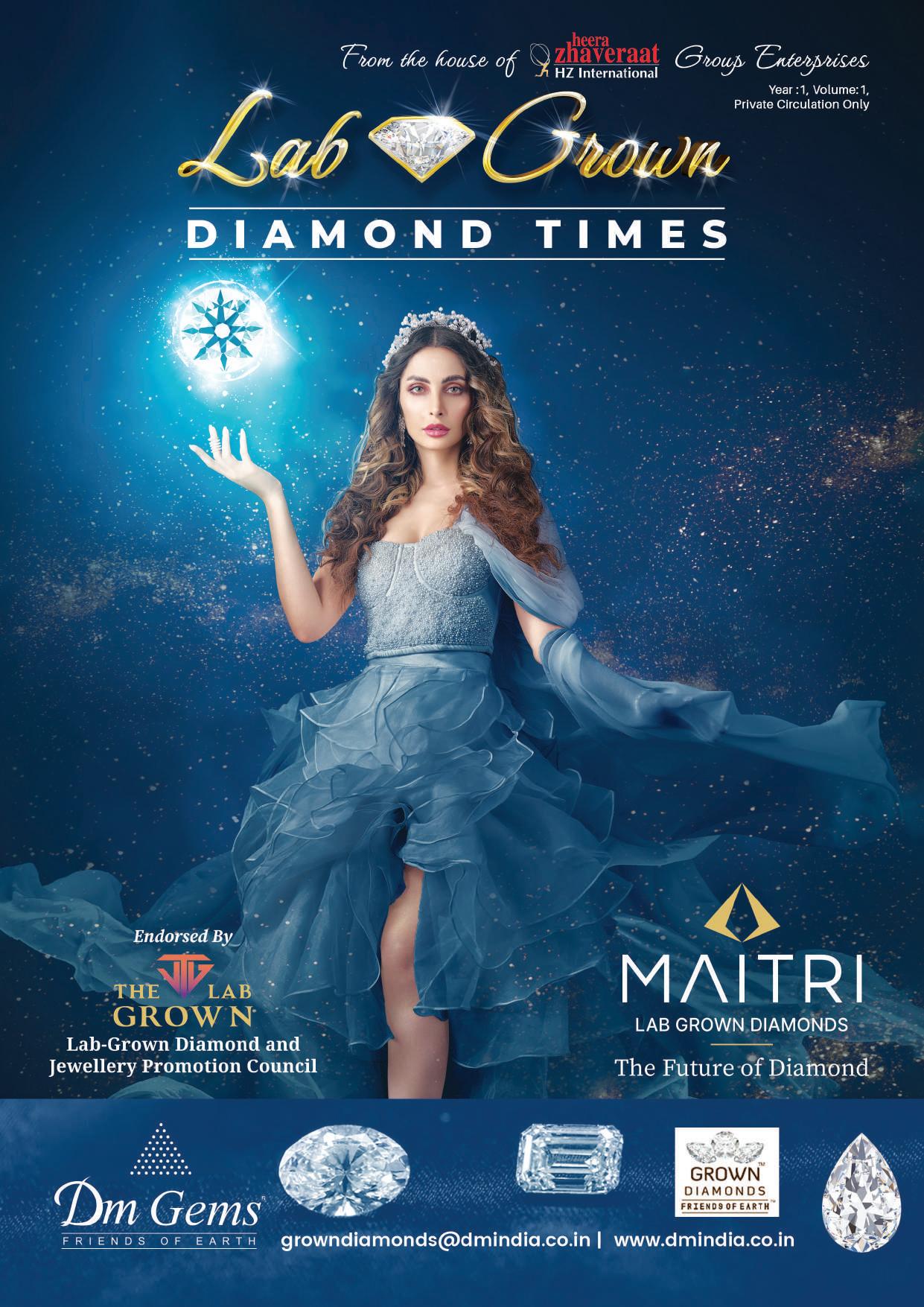








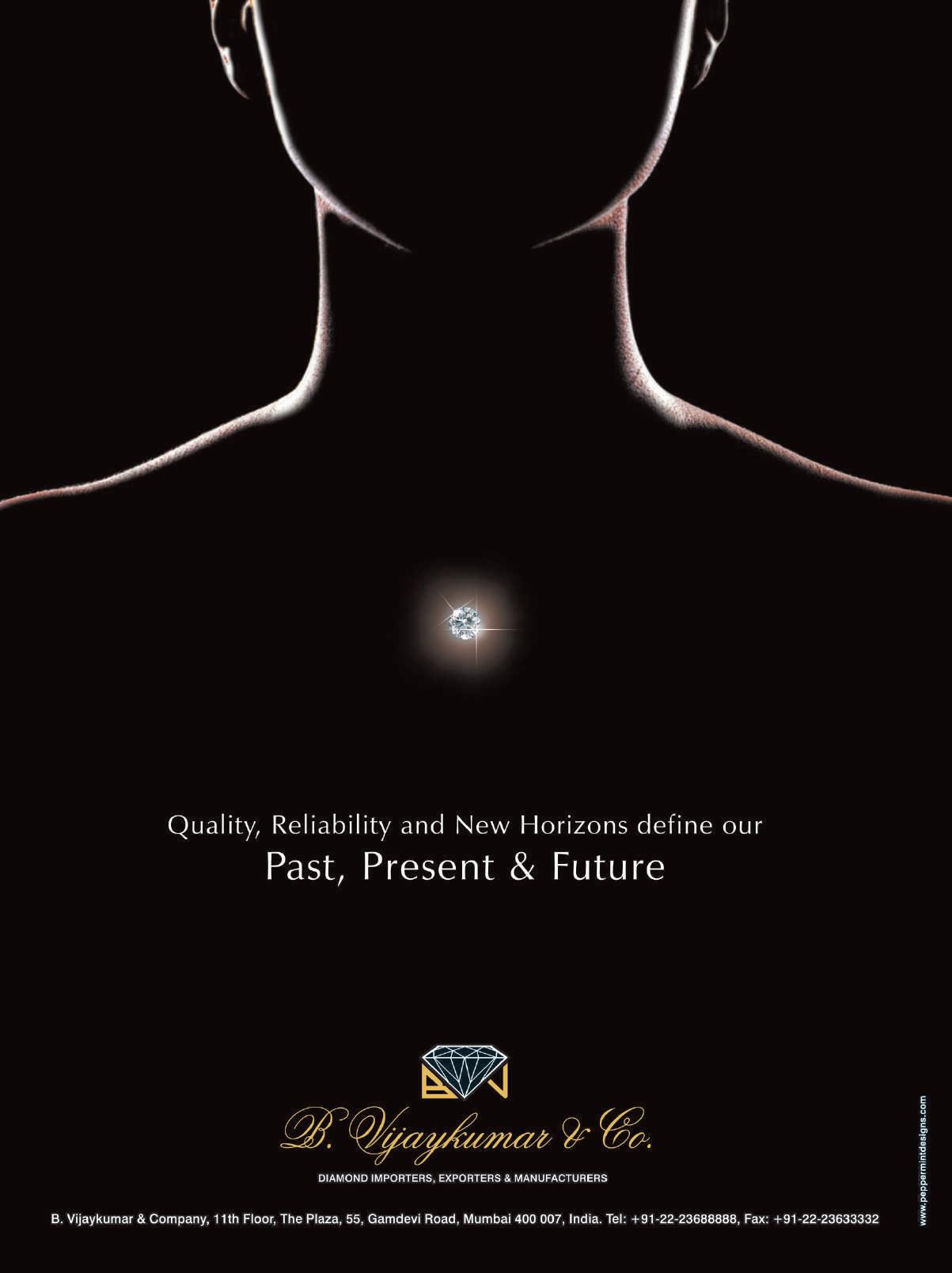
8 | LABGROWN TIMES
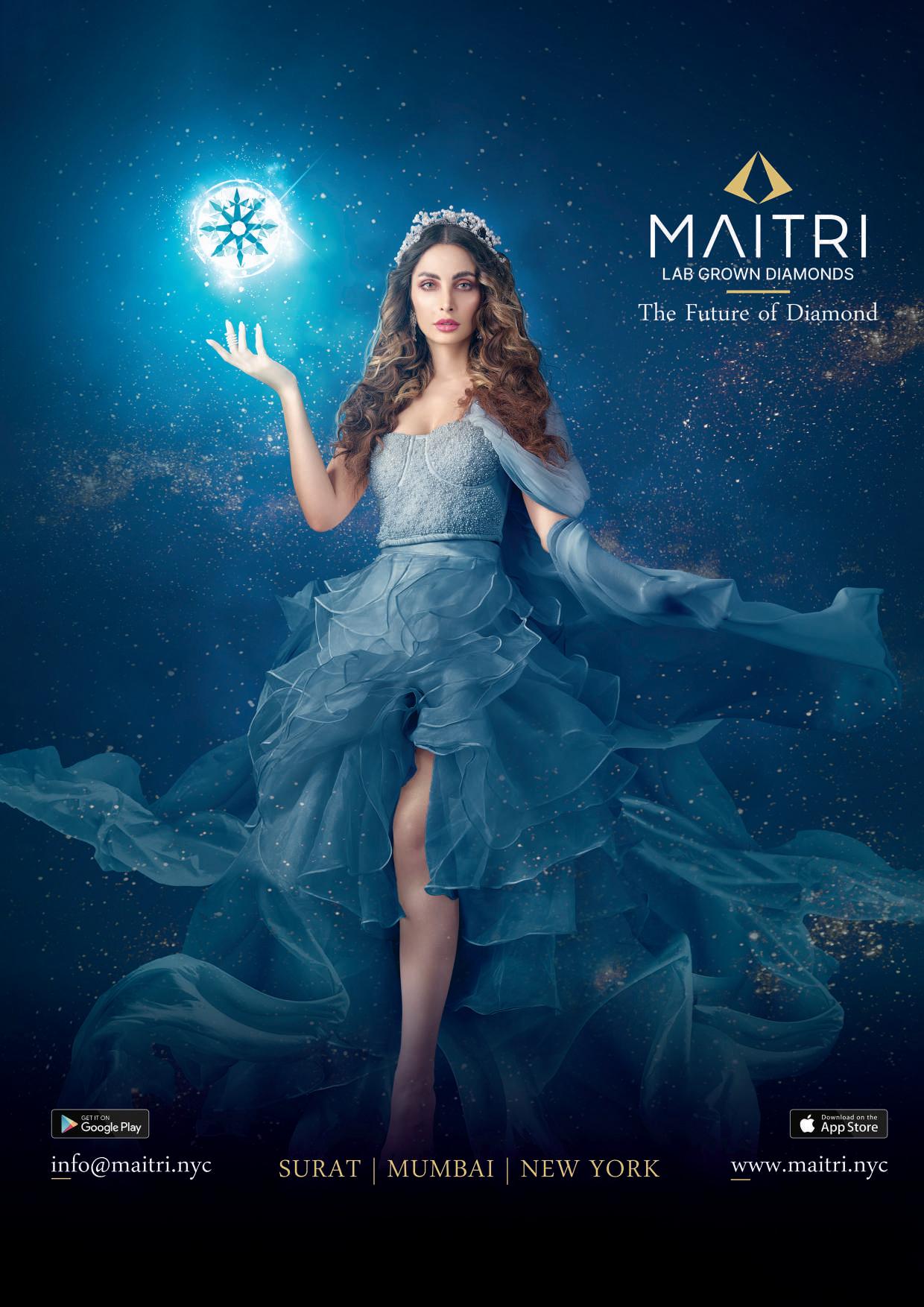



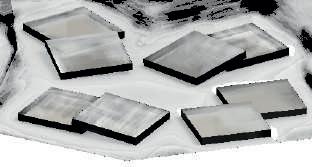

10 | LABGROWN TIMES
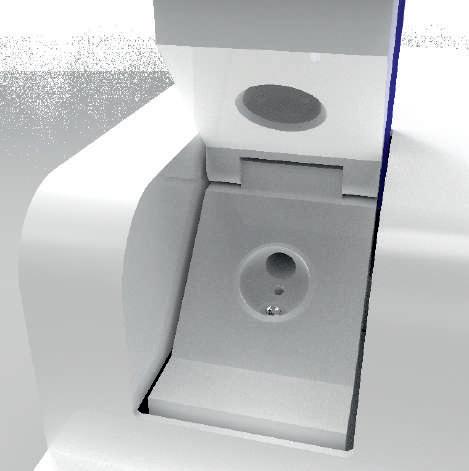

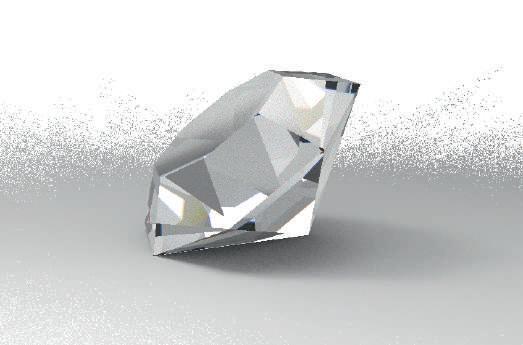

















LABGROWN TIMES | 11
Rajesh Bajaj, Director (Chief Editor & CEO) rajesh@heerazhaveraat.com
Guest Editor - Anil Prabhakar
Brand Promotion and Advertisement
Ms. Reena Shukla Director

Bajaj Overseas Ltd. 93200 55599 99876 86664 reena@heerazhaveraat.com

Satyam R Bajaj, Director, (E- Commerce & correspondent) satyam@heerazhaveraat.com +91 98675 88000
Subscription/ Press Release office@heerazhaveraat.com + 91 22 23894250

Printed, Published at PJ News & Information Bureau Pvt. Ltd.
(A Subsidiary of Bajaj Overseas Limited) 208, Majestic Shopping Centre, 2nd Flr, 144, J.S.S Road, Opera House, Girgaon, Mumbai - 400004. INDIA (INDIA) Tel +91 22 - 2389 4403 / 4250
CONTENTS
LGDs : Advantage India 11 Salam Surat 12
ESG and Blockchain : Shaping the future of Lab Grown sector 13
One on one with: Shashikant Dalichand shah Chairman of LGDJPC 14 Sonani Industries From Seed to certification and beyond 18
Q & A with: Tom Moses GIA Executive Vice President and Chief Laboratory and Research Officer 22 Evermore : Bridging the Gulf between mined and grown diamonds 24
Exhibitors 27
Diamonds Cultivated and Crafted in India for the world 33 Lab Glow’s ambitious plan revealed 36
EVAGLOW: A new lab grown diamond jewellery brand from the Salem based house of AVR Swarnamahal Jewellers 38

Amish Shah: Founder and CEO of ALTR created diamonds shares his insights gathered at JCK, Las Vegas. 39
Identification Of Synthetic Diamonds 41
How to use data analytics to grow your jewellery business? 44
LGD is not a Diamond Business! 49
In Focus Retail Landscape 54 Sahajanad Laser Technology Ltd; (SLTL): Providing cutting edge solution to the Lab Grown Diamond industry 56 Glamour Quotient 58
Rocks that are rocking the diamond world! – Prasad Kapre 60
BVC Logistics: Culture at a 60 Year Old Startup 66
Magazine Design by GK Creative Solution | www.gkgraphics.in
12 | LABGROWN TIMES
LGDs : Advantage India
India’s Gems & Jewellery Industry is today valued at about Rs 6 lakh crores with Rs 3 lakh crore of exports and another Rs 3 lakh crores worth of domestic market. The industry employs close to 10 lakh people as diamond manufacturers, exporters, jewellery manufacturers, traders, brokers, and retailers. The emerging and fastest growing segment within such a large industry is the “Lab Grown Diamond (LGD)” segment. These LGD are identical in every respect to the naturally mined diamond and is optically, thermally, chemically, and physically the same as a mined diamond. India is taking the leadership position in growing these LGDs, especially the CVD diamonds. The Indian government is also supporting the growth of this LGD industry in line with “Atmanirbhar Bharat”. These LGD diamonds are not only grown in India but
also after cutting & Polishing of the rough; these LGDs are being exported all over the world, and in the FY 21-22, the total exports were over USD 1.3 billion, i.e. close to Rs 10000 crore, and the current rate of growth for exports is 105%. This not only brings in precious foreign currency for the country but also saves millions of dollars for the import of mined rough diamonds.
The LDG growers, manufacturers, traders, and jewellers, have formed a “Lab Grown Diamond & Jewellery Promotion Council ‘’ (LGDJPC) in Mumbai. The council’s vision is to create awareness of Lab-grown diamonds, generate sales and drive the growth of LGD globally. This is likely to generate significant employment opportunities in Maharashtra & Gujarat, being the hub of the Gems & Jewellery industry. Fast growing LGD industry is also an opportunity to generate revenues for the state.
Heera Zhaveraat, the Niche publication of the international diamond trade industry published in India since 1994, has come forward to bring a dedicated and exceptional news magazine Lab-Grown Diamond Times as the voice

of this industry. It will help in uplifting and development of the industry in years to come. Analysts are of the view that in 2025, India will become a Lab-grown hub not just in manufacturing but also the cutting and polishing sector.
Veteran industry analyst Anil Prabhakar, came forward to make this magazine informative, insightful and appealing. I hope you will like and appreciate. We are grateful to all those who have supported us directly and indirectly. We hope and request your continued support and patronage to serve you better. We look forward to receiving your feedback.
LABGROWN TIMES | 13
PUBLISHER’S NOTE
RAJESH BAJAJ
SALAM SURAT
As a sales and marketing professional associated with the Indian Gems &Jewellery industry for many years, I have visited the city of Surat many times to meet retail jewellers.
It was for the first time; however, I got the opportunity to meet Surat based diamond manufacturers and wholesalers for creating the content for this publication. I was fascinated by the contribution of the local entrepreneurs who have created world class infrastructure and invested in the latest technology. The lab grown industry is booming and new manufacturing capacities are being created every day.
It is estimated that by the year 2025, the installed base of CVD reactors or machines as they are called will reach a critical mass of 10,000.
Another fascinating development is the role of gen next in the business. Across the value chain, from manufacturing to retail, young entrepreneurs are driving the growth of LGD business.
They are well educated, hardworking, progressive, and proactive. They are the future game changers
of the industry and have a better understanding of the millennial consumer mindset who are the potential buyer of LGD Jewellery.
Some of the companies featured in this issue have adopted a long term, holistic approach to execute the seed to retail shelf approach. It is the right way of creating value rather than taking a short-term trading approach.
While Surat is already on its way to become a global CVD manufacturing hub, India’s domestic market offers a huge opportunity for growth. The journey has already begun. Wondr diamonds, Limelight, Divaa by Orra, and many other companies are allocating resources to create consumer centric retail brands.
It gives me a great pleasure to be a part of Lab Grown Times. It is India’s first magazine dedicated to the LGD sector. In the inaugural issue, we have tried to feature articles and stories covering the entire gamut of the LGD ecosystem.
ANIL PRABHAKAR

I take this opportunity to thank industry analysts, entrepreneurs and professionals who have helped in creating an interesting content. A special thank you to Ms. Leanne Kemp of Everledger and Tom Moses of GIA for their valuable contribution.
This magazine would not have been possible without the support of Shashikant Dalichand Shah, Chairman of the Lab Grown Diamond and Jewellery Promotion council and Rajesh Bajaj of HeeraZaveraat.
Thank you, gentlemen, for trusting me and the confidence shown in my abilities.
Please stay in touch and share your critical inputs to me on anilpk07@gmail.com.
Let’s celebrate Azadi ka Amrit Mahotsav together.
14 | LABGROWN TIMES
NOTE
EDITOR’S
ESG and Blockchain : Shaping the future of Lab Grown sector
By Leanne Kemp Founder & CEO of Everledger

The ESG agenda is gaining momentum, regardless of whether it concerns climate change or biodiversity. It also covers community issues, diversity and inclusion in power structures and transparency in governance. The vast field of ESG offers many different areas for businesses to concentrate on. However, the diamond industry has made significant progress in many of these areas. This greater sustainability focus could also be a stronger and more effective communication tool for all stakeholders if the industry keeps its positive momentum.
Companies, organizations, and communities that are more resilient will be more successful.
The diamond industry has been active in environmental, social, and governance (ESG) efforts over many years.
ESG is a way to measure the “collective consciousness” within an industry or company. Although the initiative was originally designed to be an investment criterion that encourages responsible investing, it was formalized by the United Nations around two decades ago. However, the concept has become more popular and is used less frequently to describe general “responsibility and sustainability” efforts of
corporations and industries.
Customers expect more from businesses. Businesses must communicate their value and their values to customers.
Consumers are changing their views and will support companies that share their values. This is reflected in brand trust, loyalty, and price expectations. Purposedriven customers choose brands based upon how closely they align with their values and how willing they are to “walk the talk” when it comes to sustainability. These consumers are willing to change their behaviours and pay more for brands that demonstrate they are doing the right thing.
Trustworthy, independent sources must be connected and enabled by industry to actively engage consumers to answer & evidence satisfactorily the sustainability issues outlined above.
Transparency is the key to credibility.
The industry can now benefit by making sure consumers are aware of the industry’s future plans. This includes ensuring that they understand the sector’s actions to minimise environmental impact and maximise local employment.
With growing demand in the Lab-Grown Diamond industry in India, the cost of manufacturing a CVD diamond is a prime concern with the retailers and consumers in the international
market, mainly US, Canada and Europe. Achieving carbon neutrality and sustainability in manufacturing may give some leverage to the manufacturers to sell better.
This panel discussion will discuss the implications, opportunities and considerations of the sustainability revolution in the diamond industry.
It will discuss, explore and debate the many examples from the value chain and help to unlock the potential for the sector’s positive impact as many drive to ensure they are not only losing to competitors, but also risk losing customers who change their lifestyles.
What does this mean for diamonds, and the diamond industry in general?
How can the diamond industry ensure that diamonds remain unique permanent objects of meaning, value and beauty and continue to thrive?
A variety of industry experts and trade representatives highlight the many ways we can.
Do more to create value for consumers as well as the wider world and communicate their work in a compelling manner.
LABGROWN TIMES | 15
EXPERT OPINION
One on one with: Shashikant Dalichand shah Chairman of LGDJPC

The soft spoken and amiable Shashikant Dalichand Shah, the chairman of The Lab Grown Diamond and Jewellery Promotion Council (LGDJPC) is a busy man. Under his leadership the second edition of the world’s first exclusive B2B exhibition of lab grown diamonds and Jewellery , LDJS2022 is being organized in Mumbai at Jio World Convention Center from 5 th August to 8 th August. Following are the edited excerpts from his exclusive interview with Anil Prabhakar.
Congratulations Shashikant bhai for the recent announcement of
LDJS 2022. Please tell us more about the show.
SS: I thank all the stakeholders of the LGD industry for the excellent response to our forthcoming LGDS 2022show. We have already received sponsorships from leading companies such as Sonani, Bhanderi, Wondr Diamonds, SLTL and Maitri.
I am also grateful for the support extended by the trade alliance comprising of Bharat Diamond Bourse (BDB), Surat Diamond Bourse (SDB), All India Gem &Jewellery Domestic Council (GJC), The Mumbai Diamond Merchants’ Association (MDMA), Surat
16 | LABGROWN TIMES
“India is poised to become a global powerhouse for CVD diamonds by the year 2025”.
Diamond Association (SDA), Lab Grown Diamond Association (LGDA) Surat and our official media partners HZ international and Idex.
The first edition of LDJS was held in 2019 that had 70 booths. This year we have 200 booths at the best convention center in India.
We have also planned knowledge forum # Seminars @LDJS2022 with a tag line, The Power ofKnowledge, an award ceremony, and fashion shows. Fashion shows are planned so that our exhibitors can showcase their jewllery on beautiful models to add a touch of glamour.
What are the objectives of the LGDJPC?
Our objectives are to promote and grow the lab grown diamonds and jewellery category. This can best
be achieved by spreading awareness among the trade as well as the consumers and educating them. Trade shows and exhibitions are the ideal platforms to do so. We plan to hold exhibitions and tradeshows in all the major Indian cities in a phased manner.
What is your outlook on the current scenario and prospects for the LGD industry?
The LGD industry is witnessing a boom in the American market. This is because of the consumer acceptance and shortage of natural diamonds. During the pandemic, when the mining activity came to a standstill, consumers found an alternative in LGDs. While the two categories will co-exist the current sanctions against Russia has resulted in shortage of diamonds from Alrosa that contributes 30% of the global diamond pipeline. This has
accelerated thegrowth of LGDs.

India contributes 15% of the LGD supply and is already a global leader in CVDs.
At present there are 2500 reactors (machines) in operations. Most growers have expansion plans and are adding machines. The domestic market is also witnessing growth. With the entry of large, organized players such as Diva by Orra and Wondr diamonds the market will grow exponentially.
The Ministry of Commerce and Industry, Government of India has identified our sector as an ideal case for their Make in India and Atmanirbhar Bharat programs. The LGDJPC is committed to making these tprograms a success.

I estimate that by the year 2025, the installed base of machines will be 10,000 and the India will become a global powerhouse for CVD diamonds.
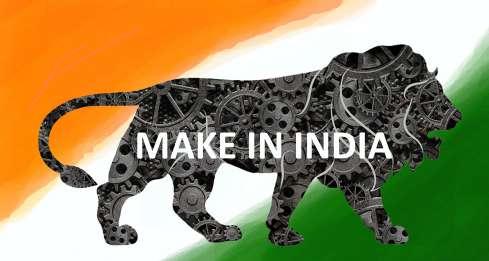
LABGROWN TIMES | 17












During my recent visit to Surat, I had an opportunity to meet Agastya Sonani, Director Industries. The young and dynamic Agastya along with his elder brother Jayam and father Mahesh Sonani are carving out a distinct niche for the Sonani group in the global lab grown diamonds business. Sonani Jewels is the division of Sonani industries. Following are the edited excerpts of my conversation with him… Anil Prabhakar
SONANI INDUSTRIES

FROM SEED TO CERTIFICATION AND BEYOND.
High Pressure High Temperature (HPHT) is the technology used for growing diamonds in a laboratory. It is an old technology as compared to Chemical Vapor Deposition technology (CVD) that is used to grow diamonds. The acronym HPHT is thus associated with growing. Very few people know about HPHT processing that is used on natural and CVD grown diamonds to enhance their color as well as removing stress of the diamond.
We begin our conversation with the HPHT process.
Mahesh Sonani is the pioneer in the Indian lab grown diamond industry. His journey started in the year 2006, when he incorporated Tenth Planet Diamond Pvt. Ltd; in Surat.


They were the first to use the HPHT process in India. In the initial years they use to make grinding tools out of diamond powder. Diamond powder is made from cubic press. As technology advanced, cubic presses began to be used in growing diamonds with HPHT technology.
Extremely high temperature and pressure causes the diamond to reform, adjust and improve it resulting in a better diamond.
Mahesh Sonani’s frequent visits to China and Russia for sourcing diamond powder proved to be a learning experience, as these countries had developed technology for growing diamonds for industrial purpose. The next

20 | LABGROWN TIMES
Agastya Sonani Mahesh Sonani Jayam Sonani
step for the group was to manufacture diamond powder in Surat rather than importing it.

The company today has a patent in HPHT processing with toroidal technology.
Apart from the gem quality diamonds Sonani jewels also caters to the industrial sector where diamonds are used in cutting tools and other applications.
Agastya tells me that Sonani group has many firsts to their credit.
In 2010, they were the first to venture into growing diamonds using CVD technology. Over the years, the group has mastered the technical aspects in growing single crystal diamonds using microwave plasma reactors. They have also developed their own recipe for growing diamonds. The recipe is the most crucial and important aspect for successful growing of diamonds.
Sonani‘s single crystal lab grown diamond has high consistent and predictable properties and behaviour, and is used for cutting, optical, electronic and detector


applications. They also supply diamond plates and blocks for many research labs throughout the world for R&D in different diamond related futuristic applications.
The year 2016 was a crucial year as the company changed its name to Sonani jewels and fast tracked its expansion plan of HPHT processing and CVD growing. While the state of the art new HPHT processing factory in Surat Hira Bourse jewellery park was completed in 2019, the CVD factory doubling the earlier capacity will be completed this year.
Continuous R&D efforts led to the introduction of fancy colored diamonds in Pink, Green and Blue among others.
Sonani group’s vision is to become a large scale integrated manufacturer with a specialization in fancy colors and shapes.
During Diwali last year, the group launched their jewellery line. A jewellery factory in Icchapore, Surat has already been operational.
Within the company duties are assigned and the brothers’ responsibilities are clearly
LABGROWN TIMES | 21
defined. Elder brother Jayam looks after activities such as growing of diamonds, cutting and polishing them. Agastya is responsible for sales and marketing functions of polished diamonds as well as jewellery. Seed marketing is another area which is handled by Agastya. The company develops diamond seeds in desired specifications and sells them to other growers.
Sonani group exports lab grown diamonds to China, Japan, US and Europe.

At present 40% of the group’s turnover is contributed by the domestic market. Going forward, the group has plans to venture into the rapidly going Indian B2C market and launch their own retail stores.
We have built a global reputation in fancy color
lab grown diamonds as a reputed and reliable supplier delivering intricate, flawless and sustainable lab grown diamonds.
In the next 5 years, we aim to become an integrated global player with presence all across the value chain viz; in upstream, mid stream and downstream segments are Agastya’s last words before we pat.
22 | LABGROWN TIMES


Q & A with: Tom Moses GIA Executive Vice President and Chief Laboratory and Research Officer

Q1. Please tell us about GIA’s LGDR and how it has been helping the Indian laboratorygrown diamond businesses.
Currently, laboratory-grown diamonds (LGDs) are available along with natural diamonds, and retailers as well as consumers are looking for independent information about LGDs to help them make purchasing decisions. As the creator of the 4Cs of diamond quality, we’re applying the same rigorous standards and processes to the evaluation of laboratory-grown diamonds that we apply to natural diamonds. The response from US-based retailers has been positive so far, Indian growers-manufacturers are positive, since they are able to
provide the same assurance of unbiased independent analysis in LGDs as they provided for decades for natural diamonds by way of GIA’s reports. We’re hoping that adoption for GIA’s Laboratory-Grown Diamond Report (LGDR) will continue.
Q2. Please explain the testing and identification processes that apply to laboratory-grown diamonds. Please explain the difference between the grading and identification process followed by GIA for natural versus laboratory-grown diamonds.
It’simportant to understand that GIA has been issuing reports for laboratory-grown
diamonds since 2007. In 2020, GIA announced the LGDR by GIA with specific colour and clarity using the scales from the GIA International Diamond Grading System™. The digital-only reports feature an updated design and format to differentiate from GIA’s reports for natural diamonds.
GIA carefully examines each laboratory-grown diamond for potential treatment and also determines the growth method of each man-made diamond. The latter step is an additional step that is included for laboratorygrown diamonds. In addition, treatment detection for laboratory-grown diamonds requires more extensive testing than with natural diamonds. The reason for this is that all laboratory-grown
24 | LABGROWN TIMES
diamonds that fall on the D-to-Z color scale are type IIa along with many of the fancycoloured laboratory-grown diamonds. Type IIa diamonds are receptive to decolorisation by annealing and thus each type IIa laboratory-grown diamond is screened for this treatment process. This category of diamond frequently is subjected to annealing at different temperatures to change their colour.
Due to the challenges that accompany testing and identification of Type IIa diamonds, laboratory-grown diamonds are subjected to the additional tests to understand the growth method as well as post-growth treatments. More
than 90% of natural diamonds are Type Ia and thus do not require the same amount of analysis. Despite this, the LGDR fees has been kept the same as that of natural diamonds in the same carat weight range. Having said so, GIA continues to engage in talks with the industry stakeholders to understand their challenges. GIA aims to address their concerns based on the feedback we receive from the market.

LABGROWN TIMES | 25
Q3. Let’s talk pricing. Could you elaborate on why GIA has for the same fees structure for LGDs as it has for natural diamonds?


Bridging the Gulf between mined and grown diamonds.
EVERMORE :
ago.
Congratulations Rohan for your success. Please share the rationale behind the choice of the brand name evermore.
We wanted to capture the moment in which expectations were heightened.
Evermore challenges the status quo, promising to deliver more than what a consumer would ever expect.
In our designs, in our conversations and in terms of the retail experience our philosophy is to deliver more. It is our desire to deliver jewellery creations that our consumers would be proud of wearing.
You had a successful stint as a real estate professional in India. Subsequently you launched a consumer healthcare startup with 7 brands with a distribution reach to over 30,000 retailers and a venture capital

investment from the Times of India Group (BCCL). What made you return to Dubai and venture into uncharted territory?
While our startup did well, I realized that that the healthcare products were being bought by the consumers out of compulsion and not out of choice. Jewellery creates a desire in the consumer’s mind. I was therefore attracted to our family’s jewellery business.
Within the jewellery business, I wanted to try something new. I therefore researched the LGD business that was doing well in the US.
At Siroya Jewellers, our strength is the distribution network for gold jewelry in the GCC countries.
In ALTR, we found the right partner and after due deliberations entered into a JV collaboration.
How has been the response to evermore?
Evermore is the first LGD brand in the UAE. We are the pioneers trying to create a niche in the market dominated by natural diamonds and gold jewellery. It is therefore an exciting challenge to create a desire for a evermore in a new product category.
We are enthused by the initial response. Evermore is now
LABGROWN TIMES | 27
Evermore is the first Lab Grown Diamond Jewellery brand to be launched in the United Arab Emirates (UAE) six months
Within a short span the brand has been able to forge retail alliances with leading jewelers to garner a retail presence in 14 outlets across MENA region and London.
Rohan C Siroya 33, Cmket and future plans.
available in UAE, Baharain, Oman and the UK.
What is the consumer profile of evermore?
We understand the Indian consumer tastes and mindset. Our initial consumer base therefore is the Indian Diaspora. We hope to extend our reach to other consumers in future.
The modern customer, including the younger generation, seeks bigger, bolder, and brighter diamonds without any compromise. With today’s accent on trust and transparency, superlative design and choice, and sustainability, Evermore is the answer. As real as mined

ones with none of the harmful consequences, with superior quality and design, Evermore
is set to dramatically change the way people perceive diamonds.


28 | LABGROWN TIMES
Participants Of




Mr. Agastya / Jayprakash
+91 99090 03806 sales@sonanijewels.comt
Kawshik M R 6374712545 rmsouth@wondrdiamonds.com
Dr. Snehal Bhanderi
+91 98251 31234 accounts@blgd.in

Kishan Trivedi
+91 9930806248 kishan@maitri.nyc
LABGROWN TIMES | 29





30 | LABGROWN TIMES
Alex
Keyur Barad 98206 69065 keyur@geckoworldwide.in growndiamonds@dmindia.co.in www.dmindia.co.in Participants Of
Mr. Kautil Popatbhai Patel +91 9327392476 kautil@vishnuexport.com
9099040080 / 079-61701616 mkt@SLTL.com
















Participants Of Hemant Patel +91-9825285953 hemant@uniprotech.in Sanat Vaviya 9106140302 sanat@devngigems.com Mr. Pramit Shah 98203 33139 accountsindia@gogreendiamonds.com Mr. Jagdish Patel +91 91044 99899 / 9879840915 sales@dnkexcel.com / lalitbeic@gmail.com Nilesh Koshiya 9920905744 nileshk@diamspark.com Sarfaras Qureshi 8080507025 sarfaraz@poddardiamonds.com DIAMONDS & JEWELLERY LLP Jetish M. Dabhi +91 98254 68100 jetishdabhi5851@gmail.com Priyankar Prakashchandra Sheth +91 9909917199 pranay.sheth99@gmail.com













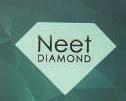

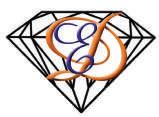
32 | LABGROWN TIMES
SR Mehta & Sons +91 77770 55667
Participants Of Gaurang Vasoya and Sagar vasoya 9727971689 excellentcorporation1@gmail.com Riteh Shah / Vinit Shah 9909409317 neetdiamond@gmail.com Harsh Panani 9930408186 acc.amiable@gmail.com JENISH VAGHANI 9594670401 jgvaghani@gmail.com
ask @mehta.tools Deepak Shah 9892632375 diagroweximpvltd@gmail.com Nirjay Diamond








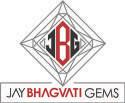







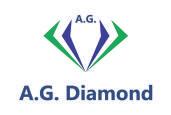
Participants Of DIPTESH BAROT +91 9867845909 diptesh.barot@altrindia.com Mr. Ankit Jain 9913777277 ankit@gemtopcompany.com Rupesh Savaliya / Hemal Dhaduk 9924699969 / 7359438509 jaybhagvatigems@gmail.com Sunil Mehta 96199 05151 accounts@sishuinternational.com Karishma Nagpal 9820660099 karishma@vdbapp.com SISHU CREATED DIAMONDS TM Nimesh Viradiya 98333 90252 newgrwowndiamonds@gmail.com Nimesh Viradiya +91 73830 50058 newgrwowndiamonds@gmail.com Raj Mehta +91 8460126820 sales.agdiamond2015@gmail.com


















Participants Of Milan Dholakiya 9909294747 milandholakia1@gmail.com / shreebhavaniimpex@gmail.com Hardik Khunt 9825901301 / 9320189001 hardikkhunt@gmail.com Jaymit Bhavsar 9512830063 jaymit.bhavsar@stpl.com Mr. Chaitanya Dombe +91 7774831830 cdombe@alicat.com Chandan Agencies 022 2205 6821 SAUMIL SANGHVI 9825187990 9898215554, 9925615554 RAJUBHAI.G.VAGHASIYA kartik_refrigeration@yahoo.com kartikrefrigeration93@gmail.com 9320055599 Ms. Reena Shukla reena@heerazhaveraat.com www.heerazhaveraat.com suvidhidiamond9@gmail.com
Diamonds Cultivated and Crafted in India for the world


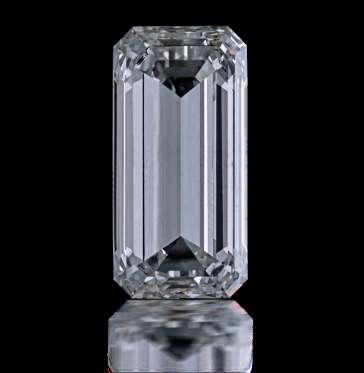
Green is the color of life, renewal, nature, and energy. It is associated with growth, harmony, freshness, safety, fertility, and environment. The Surat based Green Lab LLP has wholeheartedly imbibed the green philosophy. For the management team, green is not merely a color but a philosophy.


Anil Prabhakar visited their head office recently and met the brothers Smit Patel and Sanket to understand the group’s vision and future plan.
Green Lab has emerged as one of the largest growers of CVD diamonds. It has a presence all across the value chain ie in. upstream, midstream as well as downstream (Seed to shelf) segments. The company has invested in
LABGROWN TIMES | 35 SPECIAL FEATURE
diamond cutting, polishing and jewellery making with the ambition of being the largest global integrated player in the LGD sector.
I was very impressed with the positive energy within the team. True to its name, there is greenery everywhere in the campus. Construction activity is in full swing as the group is consolidating all its manufacturing activities at its Ichhapore facility in Surat. Secrecy is the hallmark of CVD manufacturing and very rarely is one able to visit the shop floor. I was therefore

pleasantly surprised to have a glimpse of the state of the art manufacturing facility at close quarters when Smit graciously took me on a round.
Green Lab uses solar power for its manufacturing. Smit informs me that they have 66KV substation right on their premises, to minimize the transmission losses. They have applied for LEED certification and aims to the highest rated green building in the platinum category.
He says that the first step was to outsource jewellery
manufacturing and then set up an in-house unit. The progress is right on track.
Smit agrees with the views of Piyush Goyal, the honorable minister of Commerce and Industry that LGDs have the potential to become middle class fancy. However, for that to happen educating the trade as well as consumers is very important as there are many misconception about lab grown diamonds that need to be cleared.
Initially Green Lab will get into jewellery wholesale before entering the retail space.
Sanket Patel, Smit’s younger brother is in charge of growing and manufacturing activity.

Under his leadership, the firm cultivated three unique diamonds named Om Namah Shivaya, Om is a Marquise step-cut diamond with a size of 27.27 carats and Namah is a Pear Rose-cut 15.16-carat diamond. The third diamond, Shivaya is a 20.24-carat emerald cut that exudes

36 | LABGROWN TIMES
Sanket Patel Smit Patel
charm and elegance to add grace. Greenlab proudly introduced Om and Namah as the world’s largest certified lab-grown, polished diamonds with absolutely no colour enhancement. They were a major attraction at the JCK Las Vegas 2022 show.
The multifaceted Sanket has worked in diverse sectors ranging from real estate to hospitality and agro chemicals. He hails from a third generation family of wellestablished diamantaires, with a legacy of 50 yrs. Green Lab is a family managed company headed by Mukesh Patel, Sanket’s father.
Green Lab Diamond reinforces care in the public conscience and nurtures both people and the environment. As a result, they created a unique product of high quality - Better Lab grown Diamonds for everyone, with a vision of offering sustainable luxury that nurtures the people and planet.
Sanket says the mission of Green Lab is to give back to the community and society. For the industry as a whole to do well, every stakeholder’s role is important. Every individual unit needs to survive and thrive. That is the essence of Sabka saath sabka vikas.
In order to demonstrate the future and potential of Lab Grown Diamond sector & how it can be helpful for the Government’s Make in India initiative, a delegation headed by the Chairman of Green Lab, Mr. Mukesh Patel met the Prime Minister, Piyush Goyal and Nirmala Sitharaman, India’s Finance Minister.
To maintain its lead over China in CVD manufacturing, certain benefits such as tax holiday, export subsidies and subsidized power are sought from the Govt. of India. The Government is likely to respond favorably and positive developments are expected in this regard soon.

LABGROWN TIMES | 37
LAB GLOW’S AMBITIOUS PLAN REVEALED



Labglow diamonds attracted the attention of the Gem and Jewellery trade when the brand was showcased at IGI’s D show in Delhi in the Month of May 2022. The young and dynamic Managing Director, Arnav Mehta, shared the company’s vision and the way forward in conversation with Anil Prabhakar.
Diamond is an ultimate brand in itself. Created, cultivated and nurtured over thousands of years, it is the world’s most allured brand. Brightest, Hardest and Rarest….The day Federal Trade Commission ( FTC ) declared that lab grown or machine mined

diamonds are DIAMONDS, the world’s perception about them changed We at Labglow are proud of being in the LGD business. LGD is part of the umbrella brand ie. a diamond.

Industry people are creating perception in consumers’ mind that is incorrect. We don’t agree to the way in which some of the industry players’ outlook towards the business.
Affordable, cheaper, sustainable are the adjectives used to describe the category. This is incorrect. It creates doubts in consumer’s mind such as: Are LGDs real? Or are they fake? Are they Synthetic? Or artificial? Using the
“We plan to open 150 doors for Labglow in the next three years. Our first store is scheduled for launch this festive season in Mumbai”
Arnav Mehta Managing Director
words cheaper or affordable means you are demeaning a consumer.
It takes six months for a diamond from the stage it is grown, cut, polished and studded into a piece of jewellery. Over 30 highly skilled people, master craftsmen are involved in this journey. This is the story that we need to tell the consumers.


Our story starts with… craftsmanship. We want to highlight and position our brand as New Age Luxury. We will talk about the technology and human achievements in our communication.




We would like our consumers to buy diamonds as everyday luxury, the way they buy shirts, suits and other apparel. Labglow will offer a wide choice to the consumer. They can choose from 500 to 1000 different shapes and vivid colors such as greens and vibrant orange to match with their attire. Our jewellery will have spring, summer, autumn and winter collections.
We will not be talking the language of a jeweller. We will talk about fashion, trends and frequent launches (Spring summer, Autumn, Winter) the way a consumer brand does.
We have decided to take an Omni - channel approach (to retail) and have set a goal of opening 150 doors in 3 years. Our first retail store will come up in Mumbai by Dashera followed by a second one in Surat. In the first phase we
While everyone is eyeing the engagement rings market, we will be different in our approach. Our aim is to grow the market by offering a wide variety of products. When you are talking about offering a bigger diamond for the same price, you are not targeting a new buyer; you are trying to convert an existing one.
want to open company owned stores.

We are on a recruitment drive and will hire consumer marketing and fashion professionals rather than people with a jewellery background.
Our store format will be totally different than traditional
jewellery stores. It will be an interactive store that will be a combination of physical and digital.
We will be doing away with traditional show cases and display counters. Consumers will be able to touch and feel every product.
Diamonds are perhaps the only products that are not subject to wear and tear. They are everlasting and last forever. They don’t depreciate. We will therefore offer lifelong exchange. In case you want to sell a diamond back, we will stand by the product and that’s our guarantee.

In the medium or long term, only integrated players will survive and prosper. LGDs have changed the gross margins in the industry. In the natural diamonds business 90% of your funds were locked up in the raw material. In LGDs the ratio is reversed. How do you communicate and win the consumer hearts holds the key. Only brands will survive.
No manufacturer or grower will survive in the long term… if they don’t invest in brand building.
EVAGLOW:
Lab grown diamonds jewellery is getting the attention that they deserve from consumers in the southern hinterland.
14 th April 2022 was celebrated as Tamil New Year day. On this occasion, AVR Swarnamahal jewelers headquartered in Salem launched their own label of lab grown diamond jewellery branded as Evaglow diamonds.

The brand is a brainchild of Brand director AVR Siddhanth who says,
“We took a bold decision to launch of our first LGD jewellery range that has lightweight as well as classic jewellery pieces. We are the First jeweller in India to launch fancy colour, fancy shaped LGDs,” We have received an encouraging response to our new brand.
600 customers walked in to our flagship store on the very first day. As a part of our consumer education initiative we demonstrated the CVD production process through a specially made hologram”.
Sustainable production has become the strongest product pitch for proponents of LGDs. AVR Swarnamahal,
for instance, claims that production of each Evaglow diamond saves 109 gallons of water and 250 tonnes of land extraction.
In the recent months there has been a disruption in the supply of natural diamonds. As a result prices have gone up disproportionately by almost 50%. Consumers are therefore delaying their purchases as they find the prices unaffordable.
Lab grown diamonds have received an overwhelming consumer acceptance in the US. In a digitally connected
borderless world, many Indian consumers have also starting to emulate their American counterparts.
Many of the younger consumers have therefore started considering LGDs as an alternative to natural diamonds. It is only a matter of time before the acceptance levels in India go up.
The time is therefore opportune to start retailing LGD jewellery and it is a proactive move by AVR.
There is a plan to introduce ten collections in a phased manner at all the AVR stores.
40 | LABGROWN TIMES
A new lab grown diamond jewellery brand from the Salem based house of AVR Swarnamahal Jewellers.
AMISH SHAH
FOUNDER AND CEO OF ALTR CREATED DIAMONDS SHARES HIS INSIGHTS GATHERED AT JCK, LAS VEGAS.


1.
Your reaction on the JCK 2022.
The JCK 2022 was the first show after 2019 that was important for this trade to restart the social interaction that vendors and retailers had and were missing out on. While the electronic means of communications were a good support line, in an industry where design and feel evoke emotions, nothing supersedes meeting in person and feeling the magic of fine jewelry on yourself.
2. What worked for the LGD industry & ALTR ?
Today’s consumers are not only socially conscious, and environmentally responsible,
but have enabled their right to choose through education and acceptance of created diamonds. This organic growth that was revolutionized by ALTR has bought the category to a staggering number of almost 15% of the engagement category. While ALTR was the only created diamond brand in
the entire JCK in 2016, there are almost 150 companies with 258 booths exhibiting this year. What started as a taboo conversation in the trade has emerged today garnering pride and respect. Just six years ago it was almost impossible to get a booth as a lab grown diamond company in any trade show
LABGROWN TIMES | 41
globally. To have been the first expo in the category to allow a respectable launch of a created diamond brand, and then to expand further with a lab grown pavilion for the loose diamond wholesalers highlights the open mindedness of the management at JCK that paved the way for a respectable positioning for ALTR and the entire category. Even today expos around the world have still not embraced the future of this business.
At ALTR we have always focused on what is next for the category, brand, retailer, and most importantly the consumer. We started with education which empowered the consumer and enabled the retailer to offer an experience and product that connected with the consumer. This has
evolved in the last six years from loose diamonds, to finished bridal, to fine jewelry, to couture.


3. What was unique about the show this year ?
“Change waits in the shadows of today, until it doesn’t and then it becomes unstoppable, inevitable suddenly long held beliefs turn antiquated and the improbable becomes reality.”
4. Outlook for the next six months.
In a continuously changing environment, keeping in mind the various factors that affect a consumer’s decision, we are focused on further penetrating the consumer market by strengthening our
communication, conversation, and confidence through processes and products that relate to consumer values of being socially responsible, environmentally conscious, geopolitically accountable, and most importantly economically mindful.
42 | LABGROWN TIMES
IDENTIFICATION
OF SYNTHETIC DIAMONDS
In view of some recent alerts on the possible entry of Synthetic Diamonds in to the Indian diamond industry, it is important to reassure the Gem & Jewellery industry that Gemmological Institute of India an institute sponsored by the Gem & Jewellery Export Promotion Council, is fully equipped in terms of knowhow and instrumentation to identify diamonds of all types and treatments.

There are two methods used for manufacturing of synthetic diamonds.
1. HPHT (High Pressure High Temperature) Method
2.
CVD (Chemical Vapor Deposition) Method
understand the CVD synthetic diamonds.

In our opinion CVD manmade synthetic could even be checked at the offices of the traders to certain extent.
The principal to check is very simple. All the CVD Diamonds are Type IIa, whereas a very small percentage of natural diamonds are Type IIa.
To check the Type IIa diamonds the following instruments are available.
1. Diamond Spotter –Indicates whether diamond is Type IIa or not.
2. D Screen – Indicates whether the diamond is
Type IIa or HPHT treated.
3. Diamond Sure –Indicates all Natural diamonds as “Pass” and Synthetic diamonds as “Refer for further test”. In case the diamond is Type IIa it would be advised to refer it to laboratory for further advanced identification. Gemmological Institute of India laboratory is fully equipped with the following instruments to identify all types of synthetic diamonds:1.
HPHT synthetic diamonds are mostly yellow in colour and they are Type 1 b. On the other hand CVD synthetic diamonds are Type IIa and Brown, colourless and pale pink in colour. Brown CVD synthetic diamonds can also be converted into colourless diamond by HPHT treatment. Therefore it is very important to FTIR spectra for Natural / Synthetic Diamond.
LABGROWN TIMES | 43
3.
4.
5.
FTIR 2. UV-VI Absorption
Raman Luminescence Spectra
EDXRF
Diamond View
Reena Shukla
Director LAB-GROWN DIAMOND AND JEWELLERY PROMOTION COUNCIL



LABGROWN TIMES | 45
How to use data analytics to grow your jewellery business?
The business of jewellery is based on trust and relationships. Manufacturers enjoy relationships with retailers and retailers in turn with the end consumers.

The industry is slowly realizing that harnessing data that can exponentially grow their business. There are some concepts that need to be understood and internalized
by the fraternity to benefit from Data Analytics.
Have you wondered if concepts like Big Data Analytics, Artificial Intelligence,
46 | LABGROWN TIMES
and Machine Learning are all mere buzz words, or do they have any real-life application? Are these at all relevant for your business or are these merely meant for big companies like Microsoft, Amazon, Netflix, Google? Can these be used by your jewellery business and can make it more profitable? Or maybe if a competition is already using and getting an edge over your business?
In this article, we would simplify these concepts and explain how these technologies are being used in Jewelry Industry today.
Manishi Sanwal is the Managing Director of Voiceback Analytics Pvt. Ltd;

He is an expert on luxury retail and an authority on travel business. His past association with LVMH group includes stints such as the Managing Director of Mumbai Dury Free and General Manager, Indian subcontinent with their watch and Jewellery division.
So, what is Big Data?
Data is measured in Volume (sheer size of collected data), Velocity (the rate at which new data flows into the system) and Variety (various kinds of data like numbers, images, videos,
audios, tweets, postsetc.). Big Data is when we are looking at situations where we have large volume of data flowing in at a large velocity and having a large variety. Like most things in life, complications multiply when things become large. These three are often referred to as the 3V of Data Analytics. Most of big data analytics today is about having a capability to handle large volume, velocity & varietyof data simultaneously.
“If you have dat and a business problem, come to us. We will help you arrive at a Solution”.... Manish Sanwal
And Big Data Analytics?
The analytics of this big data collected above is very often classified based onmaturity or complexity of work being done.
Descriptive Analytics combine techniques which
are used to describe the data. These include graphs, tables, charts, variousaverages etc. of the data.We have done Descriptive Analytics for our business but the current business intelligence platforms like Power BI are much more powerful and interactive.These platforms can analyze huge data sets in real time and throw dynamic graphs and charts. Highly interactive visuals with complicated analysison always-live data sets would make your data speak.
PredictiveAnalytics includes predicting or forecasting the future. Significant advancements have happened with Machine Learning and Artificial Intelligence which are terms given to various algorithms which look at independent variable and try to predict the future of these variables.
Prescriptive Analyticsis a step ahead wherein the analytics process would not
LABGROWN TIMES | 47
only predict a future scenario but also prescribe a solution or the best possible way-forward. This could be done at an aggregate or strategic level or an individual process level.
“Somewhere in your Data. Something incredible is waiting to be known”. Carl Sagan
Machine Learning / Artificial Intelligence
This is the modern-day avatar of age-old statistics and the strongest pillar of predictive & prescriptive analytics mentioned above. Vast amount of computing power harnessed by algorithms can run models with hundreds of variables over millions
of data points to predict or classify behavior. Many of statistical techniques which few of us studied growing up (Regression, Correlation, Analysis of Variation, Clustering etc.)have evolved to grow into algorithms like Random Forest, Decision Jungle, ARIMA, Market Basket analytics, Sequential pattern mining and many more which deliver a highly productive view of the data for decision making.Deep Learning or Neural Networks are another line of models which mimic human brain. These take more data and more time to train and can be highly precise in select situations.

Jewelry Retail & Data Analytics
There are many reasons that Jewelry Retail can derive immense benefits from the modern-day data analytics practices.
a) Jewelry Retail is organized and has data either for control reasons or for commercial reasons.The transactions are recorded, the inventory is recorded, the designs are recorded. This generates high quality and reliable data streams which can be used for improved business understanding and growth.
b) Jewelry is an expensive and luxury item. There is substantial investment in stocks and inventory. Use of Advance analytics for inventory optimization can save huge amount of investments and a jeweler can open more stores with lesser investments.
c) Jewelry Sourcing is complicated with multiple vendors supplying multiple designs. Often this network of suppliers is combined with your own backward integrated production or combined with trusted job workers. This creates multiple coexisting supply chains – all behaving differently. This may lead to lead times, wait times, ordering issues, excess inventory, incorrect inventory, loss of sales etc. Modern day analytics can increase the understanding of these issues, analyze the impact of these
48 | LABGROWN TIMES
issues and help a business differentiate from their competition.
d) The products are expensive, and the business has a large turnovers and thin margins. This requires high quality forecasting.A lost sales due to inventory gap creates a large dent in the profitability due to high value of products involved.
e) There is a loyalty at a customer level. A customer usually trusts a Jeweler and has loyalty spread over generations. This loyalty
creates predictability. Every time an occasion arises (could be festival led or could an anniversary or a birthday), the customer visits his trusted Jeweler. Jewelers, if they peep into their data would be able to decide customer preferences towards brands,products, designs & how is it evolved over time.
Few indicative use cases of Jewelry Retail are listed below
a) Sales Analytics to decide the Sales Trend across stores. Compare performances across festivals, stores, cities,
regions, products, designs etc.
b) Inventory Analytics to decide if the stores carry the right level and the right mix of inventory. Comparison of Sales to Inventory mix, Evaluate working capital efficiency etc.

c) Vendor Analytics to decide the performance of Vendors across product lines. Find the best and most profitable vendors for the business.
d) Production Analytics to decide the lead times, delayed orders, findingability
LABGROWN TIMES | 49
constraints causing delays in the production processes e) Human Resource Analytics to compare the performance of your sales staff across stores, across product lines. Finding good performers, reward them and find bad performers for training f) Customer Analytics to understand the buying behavior of the customers. Finding your best customers, Finding the reasons of their purchase and targeting these customers to prompt them to visit you and buy
g) Predictive Analytics like forecast sales for future months,predict customer baskets and products bought together

“Data of past Intelligently analyzed will eventually will eventually lead us to a better future”.
Why now?
The amount of data available
as well as the increased computing power has been the driver of the change. Running a data driven operation was simpler ten years back. The data was less, and the analytics was easy. One needed to grasp few simple tables and charts at the end of a quarter and plan a strategy around that.
Not anymore, data being collected, stored, and processed has multiplied due to ongoing digital transformations. As business models shift with the advent of digital and e-commerce, companies have a real threat of existence in a new competitive world. Every day, we hear of disruption of existing business models across industries. Be it hotel industry, car industry, retail, health & pharma, the advent of digital and data would shift profitability profile and cause disruptions. Any business, unless ably aided by digital
and analytics would eventually lose the battle to smarter and more efficient competition.
Conclusion
A digital transformation to a data managed operation is not a luxury anymore. It is a necessity which can create a massive differentiation for a jeweler. The available data set & the technology to analyze it can be combined to give a great competitive edge to any operator or any brand in travel retail.
For more details contact at manish@voicebackanalytics. com
This article is loosely based upon an article by the same author previously published on The MoodieDavitt Report{https://www. moodiedavittreport.com/ new-guest-column-big-dataanalytics-travel-retail/}
50 | LABGROWN TIMES
LGD IS NOT A DIAMOND BUSINESS!
A majority of the participants in the LGD area have their roots in the diamond business and consider Lab-grown diamonds (LGD) to be an extension of their diamond business, albeit a much more profitable one. Anyone who runs an LGD business on the same lines as that of a natural diamond business is setting themselves up for eventual failure!!
LGDs are physically and chemically a diamond and that for a large part their pipeline seems similar, it is
very possible that some may come to believe that natural diamond business and the LGD businessesare similar and that the same factors which ensured success in one business would work in the other.
For the jewellery manufacturing and retail segments, that statement is actually correct, and those segments would continue to be driven by the existing dynamics. It is the mid-stream and to a certain extent the
upstream where the natural and LGD businesses differ. A large part of the new capacity coming up to manufacture LGD is actually being driven and funded by persons who were traditionally in the diamond midstream, who might applying their successful practices in the natural business to the LGD business. That could be problematic.
Dialing back

The aftermath of the Covid-19 crisis proved to boon for the entire gems and Jewellery sector and specially for the diamond industry. The LGD industry, which is still in it’s infancy too got a huge boost as the US lead the market recovery, driven by huge sums of money which was pumped into their economy in 2020 and 2021. This takeoff in demand spurred a rapid acceptance of LGDs among retailers with more doors becoming available for the product.
Apart from the demand side factors, LGD demand was also driven by the complete stoppage of the Argyle mine, which affected the availability of natural diamonds for the cheaper fashion Jewellery, while jewellers also found that they were able to convert a good portion of bridal consumers to LGDs by selling them much larger stones for the same budget. The buoyant natural diamond prices also provided some support for LGD prices, along
LABGROWN TIMES | 51
with the stocking demand, as more retail stores started carrying LGD products.
2022 was expected to be tougher for the diamond industry, even before the Ukraine crisis, which added to the uncertainty for the diamond industry. Once can clearly see that both on an absolute basis jewellery sales have been flat from July 2021, while year-on-year growth has been trending to zero, as was predicted. The ripple effect of this will cascade through the through the entire diamond, and to a lesser extent LGD, pipeline.
However, the sanctions by western nations against Alrosa directly affected nearly 28% of the total natural diamond supplies, thereby opening up another possible opportunity for LGDs and this could be
another spectacular year for the LGD industry.
A manufacturing business
Given the intertwined pipelines, it is easy to believe that natural and LGD are the same business. Nothing could be farther from the truth, at least at the production and midstream level. All said and done, LGD is a manufacturing business, while natural diamonds could be considered as a resource industry.
It is important to briefly understand the differences between these two types of businesses. While all of these are common sense, these could have serious implication on how the eventual LGD business will eventually work. Excluding the technology related factors, the top 3 fundamental differences are as follows
To stock or not to stock?
The diamond industry has been traditionally comfortable holding stocks, though the period from 2012 to 2019 did dent their confidence in holding stock. There have been multiple jokes in the industry on how holding stocks is not a good business practice, but at the back of the mind, most people still believe that the inventory will still have some reasonable value if held for a few years. That is not true of the LGD industry, where prices keep dipping on a regular basis, as production and supply grows more than the current demand.
Supply will not drop when prices fall As natural diamond prices drop, what you usually find is that some marginal mines will be put under

52 | LABGROWN TIMES
care and maintenance and or producers will process differing ores so as to reduce the total rough production and leave the rough in the ground. For LGD that is not the case.
The variable cost of production is probably about 30-50% of the total cost, which means that it will still be better for companies to run their factories, even if the price falls below sustainable levels. Hence, the price fluctuations at the wholesale level will be much more severe and volatile.
The pricing game
The LGD industry continues to use the natural price lists for pricing their stones. While it may be a short-term strategy to maximise profits, it will eventually have to move to fixed pricelists. Just as the eskimos have 47 words for “snow” , the natural industry developed the grading mechanism and the pricing as the values involved were quite large. This is not true for LGDs as pricing is not exponential in nature. Having consistent pricelists and lesser quality parameters can significantly simplify the entire LGD pipeline.
If one considers the LGD business to be a manufacturing one, it is not difficult to imagine an LGD industry which will fewer quality parameters with lower pricing differential. Producers will manufacture and polish diamonds based as per
advance orders on a just-intime basis and move totally away from thetraditional stock and sell model. This is probably a more realistic vision for the LGD business, and those who move there first will clearly have the advantage.
to exceed 30 cts.
The Pride of India, grown using the Chemical Vapor Deposition (CVD) process, the Pride of India; measures 18.85 x 15.85 x 9.71 mm. The gemstone displays H color and VS2 clarity with polish and symmetry grades of Excellent. The type IIa rough crystal from which it was fashioned took approximately four weeks to grow.
Pranay Narvekar
partner at Pharos Beam Consulting LLP, is a leading expert on many of the crucial strategic, financial and structural problems facing the diamond industry pipeline. He has been among the initial supporters of the LGD industry.
He has over 20 years of consulting experience and has previously also worked with Rosy Blue. He can be reached at pranay@ pharosbeam.com

IGI has analyzed and graded a 30.18 carat emerald cut laboratory grown diamond, the world’s largest to date. Produced by Ethereal Green Diamond, LLP the 30.18 ct “Pride of India” is the first polished lab grown diamond
Ethereal Green Diamond, headquartered in Mumbai, India, is well-known for producing large, highquality lab grown diamonds. According to Hirav Anil Virani, Ethereal’s Managing Director, the company plans to continue creating and certifying such exceptional record-setting diamonds.
IGI is the largest organization of its kind, having laboratories worldwide, with an impeccable customer driven team and ameliorating technologies and equipment. This gives us the trust and confidence to certify our diamonds at IGI. Choosing ethically made, long-lasting items is one of the best actions you can take for our planet and its people.
Constant research in developing methods and technology to protect the interest of the end consumer has been the utmost priority at IGI. Our team is continually in search of methods to ensure such spectacular creations are graded with rectitude & precision!
LABGROWN TIMES | 53




54 | LABGROWN TIMES One-Stop Logistics Solution For Indian & Global Exhibitions Service To And From Exhibitions Secure Overnight Storage At All Exhibition Venues At-Show And Storage Risk Cover Dedicated Customer Happiness Desk ATA Carnet & Documentation Assistance 1800 123 2711 www.bvclogistics.com Scan For BVC WhatsApp O cial Logistics Partner
















LABGROWN TIMES | 55 Scan To Chat With Us care@bvclogistics.com bvclogistics.com 1800 123 2711 O cial Logistics Partner CUSTOMER SERVICE CONNECT WITH SALES GET REAL-TIME UPDATES BOOK A PICKUP
In Focus Retail Landscape
With increasing consumer acceptance of Lab Grown diamond jewellery, retail scenario in India has gathered momentum.
Retailers across India are retailing lab grown diamond jewellery. Brands such as Limelight are now available in metros, mini metros and B towns such as Muzaffarpur in Bihar. Notable among them is Havya Jewels in Hyderabad.


Divaa by Orra and Wondr diamonds have set up a chain of exclusive mono- brand boutiques in major cities. Wondr diamonds already has

six boutiques and have plans of going international soon.
Everbrite a Mumbai based brand has opened shop in shop in Surat and other cities in Gujarat.

To Vandals goes the credit of being the first designer LGD store in India. Other leading jewellery designers like Poonam Soni founder of Poonam Soni Signature line Pvt Ltd; are promoting bespoke lab grown diamond jewellery.
Avtaara and Syndiora are online stores that retail only labgrown diamond jewellery.
56 | LABGROWN TIMES





LABGROWN TIMES | 57
Sahajanad Laser Technology Ltd; (SLTL):
Providing cutting edge solution to the Lab Grown Diamond industry.
The Trailblazer, is defined as someone who successfully brings something to reality, which did not exist before. It is not merely a word; it requires persistent efforts of a lifetime. SLTL Group - Sahajanand Laser Technology Limited is the company that has re defined what is called a “Trailblazer”. Innovation is into the foundation of this organization, SLTL invented the first fiber laser cutting machine. A machine, which went on to become the game changer for many sectors. Today, SLTL operates in six major business verticals: Industrial Lasers, Gems & Jewellery, Medical
Devices &Equipment’s, RF & Microwave, Renewable Energy and Hi-Tech Software Development.
SLTL Group has always brought in the needed innovation through technology to grow & sustain the diamond industry in India. The industry today thrives with the latest technology that benefited diamond manufacturing quality, price and productivity. SLTL Group’s state-of-art technology of Diamond Processing System uses integrated AI combined with Artificial Neural Network (ANN) and Artificial Artisan (AA) systems to deliver a
class-apart result in every stage from the mining to the marketing of diamonds.From MINE or LAB to MARKETwe create value at every step for the entire Diamond Processing pipeline with trusted ingenious technology and the world’s most advanced Laser Systems designed for the entire Diamond Journey.
SLTL Group extends to the diamond industry the vision, uncompromising determination and revolution becoming the perfect choice for processing Natural and Lab-Grown Diamonds. SLTL’s machines have taken CVD Diamond Growing and

58 | LABGROWN TIMES
Processing to the next level. Smooth Laser processing to obtain CVD diamond slices with excellent edge quality and the coring is done with unparalleled precision. The company’s laser systems can skilfully perform this crucial operation and achieve breakfree slicing.
SLTL Group’s advent technology is designed for ultra-fine internal assessment of all types of inclusions whether transparent or black - piques, cracks, bubbles, clouds, etc. and the possibility of wider zoom enables better view and clarity to track down the impurities to the core. The planning machines generate an accurate 3D model of the internal structure of a rough diamond. This is then processed in a diamond sawing machine to separate the single gemstone into several diamond pieces. The separated diamonds are cut and taken for processing to
give them the desired shape, size and colour. Superlative machines can colour grade the diamonds to ascertain their quality grades and then these beautiful diamonds are then polished and aesthetically marked by SLTL Lasers over the diamond Girdle.
The organization provides solutions for various jewellery applications like hallmarking, cutting, marking, welding and engraving for processing precious metals like gold, silver, titanium, platinum, and others. We have also developed a mechanism for saving precious metal and collecting it. With the introduction of groundbreaking technology in hallmarking operations, SLTL captured more than 85% of the market.
Highly experienced research scholars, laser specialists, engineers specialized in the fields of software,
electrical, mechanical and instrumentation etc. are on-boardour R&D team members. All of them dedicatedly contribute to the organizational ambition of Excellence through Empowering Innovations. Laser tools have been positioned as a versatile alternative to undertake a plethora of tasks, where there is a need to process precious gems and jewellery: laser machines become onestopsolutions.

With exports to more than 40 countries; The Indian subcontinent, South East Asia, Middle East, Russia, China, Europe, USA, Canada, and Latin America have become SLTL’s major exporting hub for laser undertakings. Within 33 years, SLTL has introduced many orbit-shifting gems & jewellery processing machines. These are the machines which have taken the diamond & jewellery industries and in turn our company to new heights.

LABGROWN TIMES | 59
Maulik Patel Executive Director, SLTL Group
Dr. Arvind Patel CMD, SLTL Group
GLAMOUR QUOTIENT


LAB GROWN DIAMONDS AND JEWELLERY HAVE FOUND INCREASED ACCEPTANCE FROM CELEBRITY AND INFLUENCERS ALIKE. RETAILERS AND BRANDS ARE USING SOCIAL MEDIA TO SHOWCASE THEIR CREATIONS WITH THEIR HELP. SOME OF THEM ARE FEATURED IN THESE PAGES.


60 | LABGROWN TIMES
Amyra Dastur image courtesy : Syndiora
Sonal Chauhan image courtesy : Syndiora
Shilpa Shetty image courtesy : Vandals







 Aashna Shroff image courtesy : Syndiora
Jacqueline Fernandez image courtesy : Vandals
Masaba Gupta image courtesy : Syndiora
Bhagyashree & her daughter Avantika image courtesy : Vandals
Neeti Mohan image courtesy : Limelight creations
Bhumi Pednekar image courtesy : Vandals
Janhvi Kapoor image courtesy : Vandals
Aashna Shroff image courtesy : Syndiora
Jacqueline Fernandez image courtesy : Vandals
Masaba Gupta image courtesy : Syndiora
Bhagyashree & her daughter Avantika image courtesy : Vandals
Neeti Mohan image courtesy : Limelight creations
Bhumi Pednekar image courtesy : Vandals
Janhvi Kapoor image courtesy : Vandals
ROCKS THAT ARE ROCKING THE DIAMOND WORLD!
– PRASAD KAPRE
Prasad is a Strategic advisor to the Gems & Jewellery Industry. He is the Former DeBeers. Business Director, Ex FICCI, Co Chairman (Gems & Jewellery Sector) and currently on the board of CII Task Force (Gems & Jewellery Sector)

“Diamonds are a girl’s best friend” and that’s been the mantra for years. But what’s drawing the attention of the world today and especially the millennial and generation “Z” are the new age “Lab Grown Diamonds”. The rocks that’s rocking the world of diamonds. Today, Diamonds are grown above the earth in a plasma reactor (Lab) by a process that exactly replicates the natural process of diamond formation that happened billion years ago deep within the earth’s crust.
So, what are Lab Grown Diamonds?
GIA and other leading Diamond certifying agencies of the world have clearly defined Lab grown diamonds as physically, chemically and optically identical to the natural diamonds mined from the earth.
Lab grown diamonds are grown in a plasma reactor by two different processes primarily
1. Chemical Vapour Deposition (CVD)
2. High Pressure High Temperature (HPHT)
With these two processes the end result is the creation of
a diamond which is identical in every respect to a mined diamond. To the extent that these grown diamonds match every physical & chemical property of a mined diamond as shown in the chart below:
A human eye cannot detect the difference and only a Diamond certifying laboratory, well equipped with the latest

62 | LABGROWN TIMES
GUEST ARTICLE
machines can actually identify the lab grown and the mined diamonds.
But what is the need for growing these diamonds in a Lab?
It is said that the mined diamonds, being a natural
resource, it is depleting fast and the mines carrying these diamonds are exhausting and in coming years will not be in a position to supply enough to meet the growing demand for diamonds in the world.
As can be seen from the research report of Frost &
Sullivan (graph), in just another 8 years, i.e. by the year 2030 there will be a huge gap of 159 million carats of rough as against the total demand for 221 million of rough diamonds. So the lab grown diamonds are likely to fill this gap to some extent.

As per the Global Diamond Report 20-21 published by Bain & Company the total production of Lab Grown Diamonds in the world is in the range of 6 to 7 million carats.
Out of the total production of about 7 million carats of rough diamonds, India is the world’s largest producer of the CVD Diamonds and is also growing at a very fast pace.

LABGROWN TIMES | 63
Where in the world are these diamonds been grown?
Are these Lab Grown Diamonds being graded in the same manner?
Being identical to mined diamonds in every respect, the Lab grown diamonds are also graded by all the diamond certifying labs in the world, in the exactly in the same process and measuring, grading and certifying under the same parameters like the one being used for mined diamonds. Here is the example of a jewellery certificate from the leading certifying lab SGL.

As can be seen the certificate clearly mentions it be a Lab Grown Diamond with all the 4C’s i.e. Cut, Colour, Clarity and Carat weight clearly defined as is done in the case of mined diamond jewellery.
So who are the early adopters across the world?
Leading companies/brands of the world have already adopted these diamonds and have introduced their own brands or generic lab grown diamond jewellery. The world leader DeBeers introduced their own brand of Lab grown diamond jewellery under the brand name of “Lightbox” in the year 2018. Pandora, Damas, Hoover & Strong, Macy’s Zales. Walmart etc. are some of the world brands that have been very active and have introduced their own collections/brands using lab grown diamonds.
In India too there are new brands that have emerged. Limelight being the market
leader other brands are Nitiya, Vandals, One glass shoe, Fiona, Wonder and many such others.
How are these diamonds priced? Is it the same as mined diamonds?
Since lab grown diamonds are grown and processed above the earth there is no mining involved so they are first of all eco-friendly. Besides this lack of mining is the biggest strength of these diamonds as all the mining cost that is saved by growing these diamonds above the earth is passed on to the end consumers. So Lab grown diamonds on an average is about one third the cost of mined diamonds. That mean for the consumers it’s like getting a 65% discount.
64 | LABGROWN TIMES
Wow! Isn’t that something every consumer looks forward to?So the lab grown diamonds are not only eco-friendly but also very affordable. So for the end consumers the choice they have, in terms of diamonds, is “Double the size or half the price” of the end jewellery that they wish to buy.
So, what’s in it for the end consumers?

There are number of benefits for the consumers.
1. Highon Radiance, brilliance, Sparkle & Fire – Lab grown diamonds produced with CVD technology are the purest form of carbon. This means there are no impurities trapped inside the rough diamonds during its formation in a plasma reactor. Since its 100% pure carbon, the brilliance,
sparkle and the fire of a lab grown diamonds are much higher. Technically these diamonds get classified as Type IIA, which is the purest form of carbon. In the natural world, less than 2% of the natural/mined diamonds are classified as type IIA. One such example of a mined diamonds which is classified as type IIA is “Kohinoor”.
2. Eco-Friendly –
Since there is no mining involved in the growing process it is considered to be environmental friendly product. However it is yet to be concretely proved to be totally environmentally friendly. There is a raging debate on this issue and sooner or later the industry needs to get an answer to this.
3. Affordable –Since there is no mining involved the savings are passed on to the
end consumers and so these diamonds are very affordable and pocket friendly.
4. Value for Money –Since these are affordable they give better value for money. It also means it can be a very good product to gift it to the near and dear ones.
5. Trendy – Being the new age diamonds, the western world has quickly adapted to these diamonds. So in the gems & jewellery world it is the fastest growing category and soon even in India it will grow in demand.
6. Ethical -the mined diamond industry came under scrutiny with unethical production practices that were exposed. As against this lab grown diamonds do not have any such unethical issues and are considered to be totally ethically produced and processed.
LABGROWN TIMES | 65
The consumers worldwide are becoming more and more socially responsible and are willing to buy ethically responsible sustainable brand. Since Lab grown diamonds are perceived to meet this requirements of new age consumers it is being well received by them. India rates high on this social responsibility norm as is evident from the graph.
Why do women buy diamonds? How can Lab grown diamonds help to fulfil this dream?
No woman needs a diamonds but every woman wants one. The fact of the matter today is the way you dress is the way you get addressed. So primarily there are different reasons for which women buy diamonds but is every woman’s dream to at least own one of her own.
DIAMONDS / DIAMOND JEWELLERY ARE BOUGHT FOR THE FOLLOWING REASONS
1. I’m worth it - Right or wrong, some people measure self-worth by the size and quality of the diamond jewellery they receive. “If he spends three month’s salary on an engagement ring, then I know I’m really important to him.” This can also be applied to the quality and value of diamond jewellery that a person may buy for himself. Taking into consideration how much a person can afford, often their purchase will reflect the degree to which they believe they deserve the jewellery.
2. Let’s celebrate - When there is a family celebration, or other special events that arise, the elemental nature of the diamond jewellery given reflects both the joy and importance of the celebration. This could be the birth of a child, marked by the mother receiving diamond jewellery from the father, or a couple celebrating their diamond wedding anniversary, marking 60 years of marriage!
3. I did it! - Either in recognition of one’s own accomplishment or of
someone else’s, diamond jewellery is a natural choice after overcoming challenges and achieving a significant goal. “Yes! I finally got promoted to VP. Now I can buy myself that fancy college ring that I’ve been wanting all these years.”
4. I want something truly special -The rarity of a diamond itself, and its combination of the 4Cs, make all diamonds one-of-akind. Presenting a diamond to a loved one can be an expression of this. “Your inner beauty is as unique as this diamond. Please accept this gift as a reflection of all of your virtues.”
5. Reflecting a Diamonds Qualities
- Some may buy diamond jewellery for himself or others as an expression of an individual’s dazzling, distinctive, radiant personality. Other qualities that may also be reflected here are: reliability, inner strength, fire and sparkle. “The qualities I see in myself, I choose in the diamonds I wear. I am a vibrant, strong, stable person.”
66 | LABGROWN TIMES
Are the Indian consumers willing to accept this?
6. Making the right impression -Generally speaking, when it comes to giving diamonds, this is a male motivation, though occasionally women purchase diamond jewellery with this motivation as well. “These diamond bangles will show her how much I care and want to be there for her.”
7. The Promise of a diamond - It’s that moment when a man realize that today is his anniversary and he doesn’t have a present for his wife! Only a lavish gift will redeem him, and diamond jewellery is the answer. Demonstrating the investment in her happiness shows that she is at the top of his mind. “I don’t know what to get her and time is running out. Well, I can’t go wrong with a diamond, she’ll love it.”
8. Redemption -Saying sorry, or the need to make a point of how important a person is to you can be well expressed with diamond jewellery. The symbolism of a diamond as a stone that lasts forever and survives adversity to sparkle on, appeals to this
motivation. “I am not sure where I stand in her eyes, and I want to let her know how important she is to me. This heart pin with the little diamond in it should express this.”
9. Purely a gift - As diamonds transcend function, giving diamond jewellery means expecting nothing in return. “I’m giving her a diamond and not a household item because I want her to know that she is appreciated by this family for so much more than just the hard work she carries out every day.”
10. Ultimate symbol of Love –As a pure expression of love, diamonds are considered to be the ultimate symbol of love and if one needs to express his/her love gifting of diamonds to near and dear ones is considered to be the most appropriate thing to do.
Lab grown diamonds meet every requirement and every occasion that a consumer needs the diamond for. The most significant consequence of lab-grown diamonds is that they give consumers the
power to select.
The democratization of luxury is something that any company can commit to. This implies it’s time to stop debating the worth of lab-grown diamonds against those mined from the ground, because the truth is that diamonds are worth the emotions they convey. Consumers pay a transactional price at the counter, but diamonds were never intended to be a financial investment. They are emotional investments in the sense that they capture moments and sentiments.
All the diamond merchants of the world are dream merchants fulfilling a dream/desire of a woman. A woman may walk into a room wearing a simple cotton saree but the rock that she wears says it all. Today, you don’t have to be born with blue blood or you don’t have to be rich to afford these rocks because every woman today can afford these rocks that’s rocking the diamond world. Thanks to Lab grown diamonds.
LABGROWN TIMES | 67
BVC LOGISTICS:

CULTURE AT A 60 YEAR OLD STARTUP
We’ve learned the hard way that culture isn’t a to-do which ‘gets done’, but a perpetual activity. It’s our job to reinforce our culture in every conversation, every hour of every day. It’s a marathon, not a sprint and we’re excited to be on our path.
- Mr. Bhavik Chinai, Group CEO, BVC Logistics

68 | LABGROWN TIMES
YOUNG TURK
Around 2012, the BVC culture was extremely rewarding for long tenures. It was like a batsman getting rewarded for lasting 100 balls rather than scoring a 100 runs. While that culture helped BVC earn trust and product market fit, to continue to grow like a startup, there was urgency to change. We have invested the last few years re-engineering our culture from bottom to top, keeping our values at the center of everything we do while focusing on the big picture.
Today, we are extending our trust in our teams across all touch points. For example on the HR policy side, we now have an attendance policy that allows a BVCite to work from any physical location, at whichever time of the day they’re most productive and not follow a standard 9-5 schedule (whether it’s at night or early morning or during the day), and work any days of the week they feel they’ll add value. The culture is changing to working exclusively for outcomes, not number of hours.
Instead of following annual goal setting methods, we operate an OKR style quarterly goal structure.
In our experience, annual goals purely remain on paper despite the business needs evolving and hence we’ve adopted a quarterly goal structure. Reviewing each quarter’s evolving needs allows us to change methods while progressing directionally toward our vision. Instead of allowing availability bias to influence a BVCite’s performance review, higher frequency of performance evaluation facilitates a fairer assessment to create leaders of tomorrow. Today, we are growing exponentially in most of our sub-segments, instead of the 10-20% year-on-year growth. Startup is a mindset and Team BVC has it now.
BVC’s growth lies in facilitating more trade in the jewellery industry. BVC is continuously listening to customers and looking at cross-industry innovations to apply to BVC. We are pioneers in launching several new solutions which have become the market norm today, from private exhibitions to Window Pickup & Drop solutions, from Annual Contract partnerships to secure e-commerce logistics solutions, from jewellery fulfillment centers to packaging solutions,
most touchpoints of secure logistics today have an origin story coming from a BVC whiteboard. This push for innovation everyday has been an integral value of every BVCite and reinforces our startup journey.
The average age of new BVCites has dropped from late 40s to early-mid 20s. Our team continues to become younger with extraordinary ideas coming from young BVCites. We also focus on onboarding individuals outside logistics & jewellery with the belief that streetsmart folks figure it out, and they have.
In the next five years, BVC aims to continue to grow exponentially. We currently make shipping the competitive advantage of over 30,000 businesses globally, and have a goal to facilitate $100B worth jewellery trade annually by 2025.
To achieve this audacious goal, we continue to improve the diversity of our team & continue to disrupt ourselves. As we speak, there are over 5 pilots of different startups being executed across the country, with a focus on either creating IP or co-creating IP with startups.
LABGROWN TIMES | 69
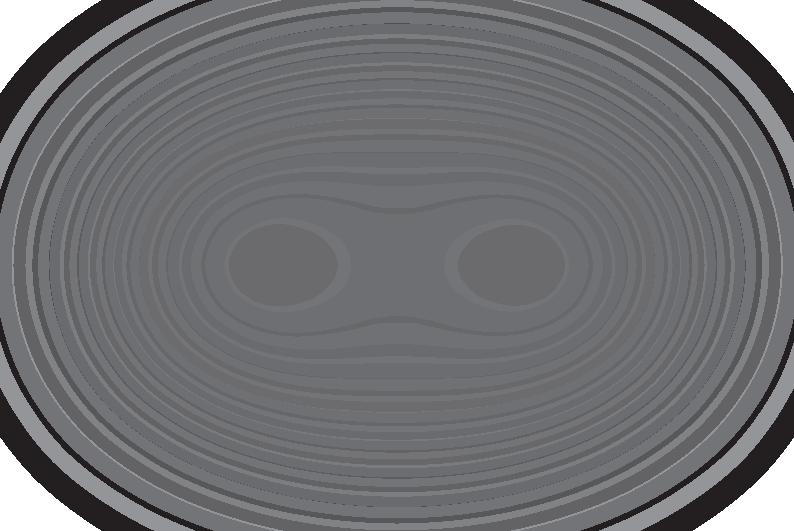
70 | LABGROWN TIMES DATE TIME SUBJECT 5th August 2.30 PM to 3.45 PM Current State of the Gem & Jewellery Industry and opportunities for collaboration 5th August 2.00 PM to 2.30 PM Inaugural Keynote : Explore the emerging technology from Mine to Lab 5th August 4 PM to 5.15 PM Role of Millenials in the Lab Grown Diamond Industry. 6th August 11.30 AM to 1 PM ESG & Blockchain: Shaping the future of Lab Grown Diamond Sector 6th August 2.15 PM to 3 PM Big Data Analytics & the Jewellery Industry : A Masterclass 6th August 3.10 PM to 4.40 PM Are Lab Grown Diamonds the next big GROWTH opportunity? Venue : Room no 105 A& B, JIO World Convention Centre, BKC Mumbai 1. There is no entry fee for attending the seminars and Panel Discussions 2. Audience members asking the best questions during each session will get a complimentary copy of the best-selling book Outlast : How ESG Can Benefit Your Business For queries : please WhatsApp : +91 99679 26147 or send email to : bdo@labgrownindia.com SEMINAR SCHEDULE
704, Office No.5, Shukra Building, Diamond Market, Gaushala Lane, Malad (East), Mumbai- 400097, Maharashtra, INDIA.




Email: contact@dmindia.co.in www.dmindia.co.in
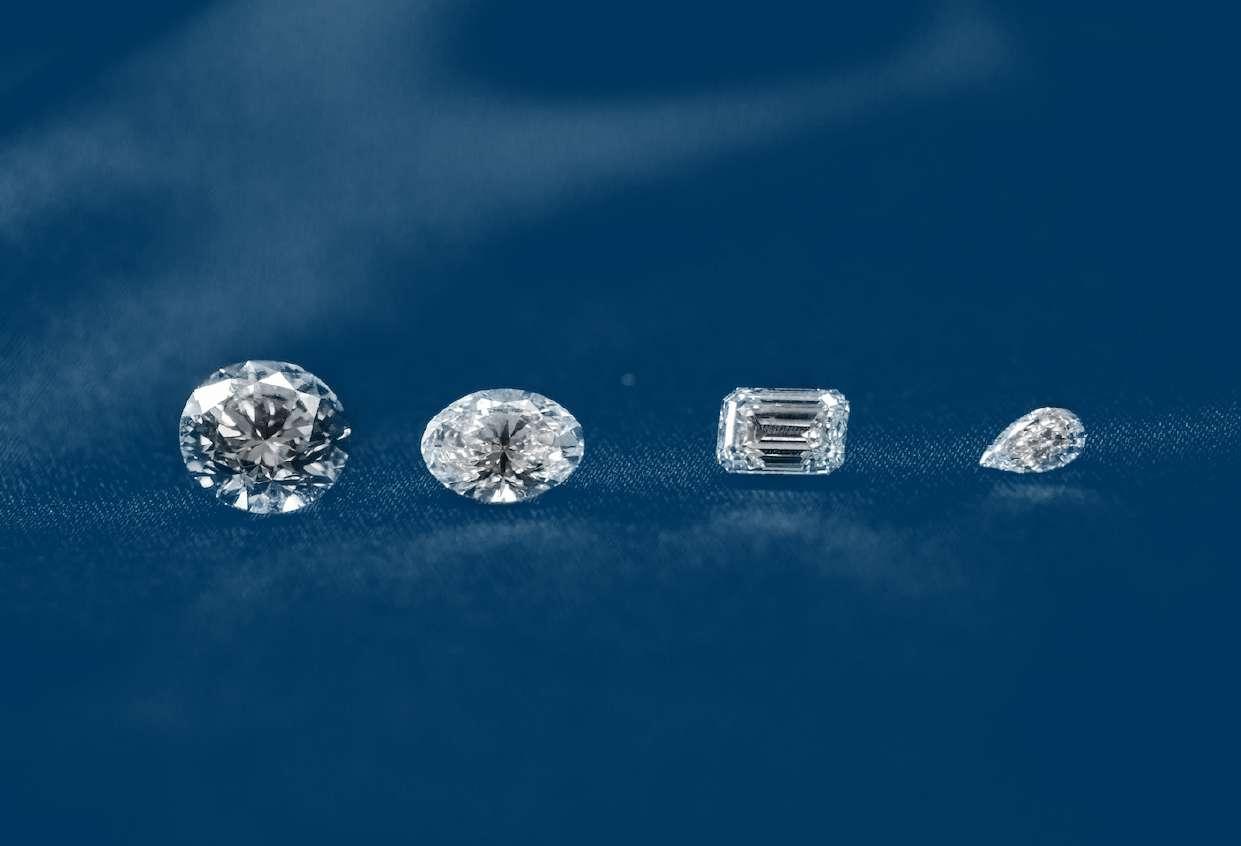






LABGROWN TIMES | 73







74 | LABGROWN TIMES






































































































































































































 Aashna Shroff image courtesy : Syndiora
Jacqueline Fernandez image courtesy : Vandals
Masaba Gupta image courtesy : Syndiora
Bhagyashree & her daughter Avantika image courtesy : Vandals
Neeti Mohan image courtesy : Limelight creations
Bhumi Pednekar image courtesy : Vandals
Janhvi Kapoor image courtesy : Vandals
Aashna Shroff image courtesy : Syndiora
Jacqueline Fernandez image courtesy : Vandals
Masaba Gupta image courtesy : Syndiora
Bhagyashree & her daughter Avantika image courtesy : Vandals
Neeti Mohan image courtesy : Limelight creations
Bhumi Pednekar image courtesy : Vandals
Janhvi Kapoor image courtesy : Vandals


























